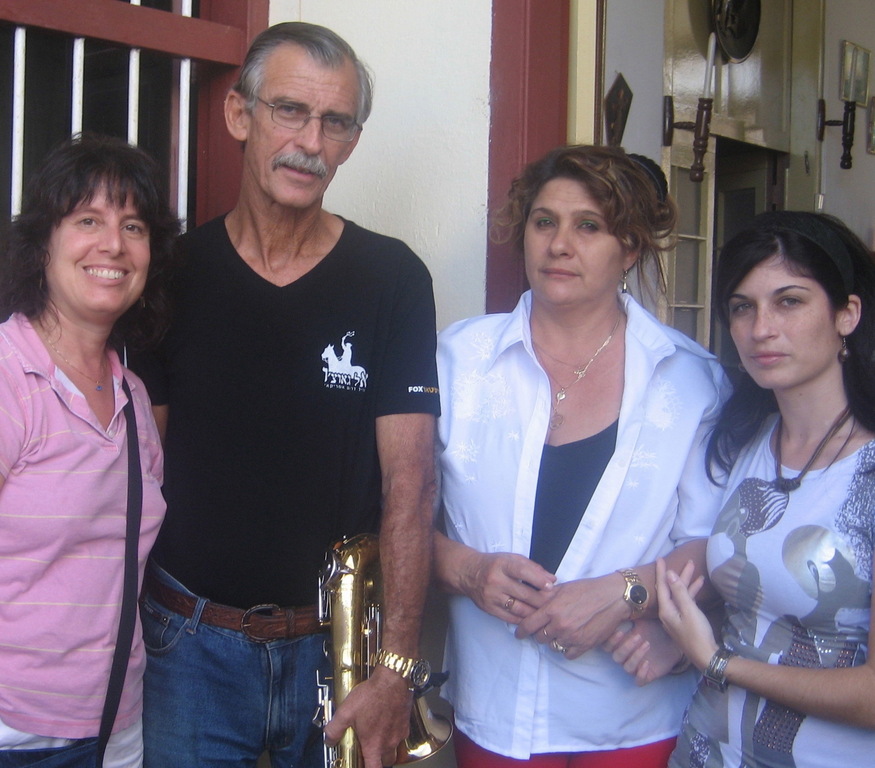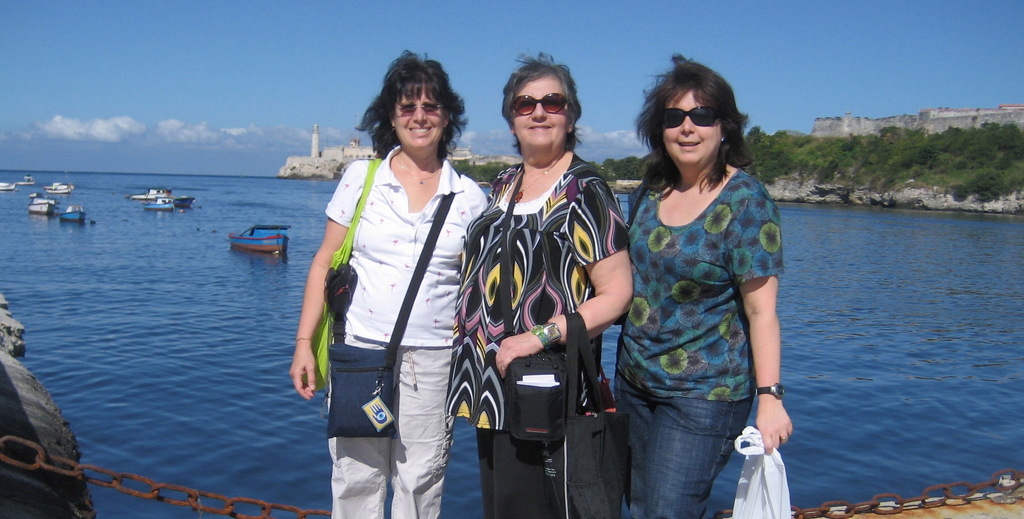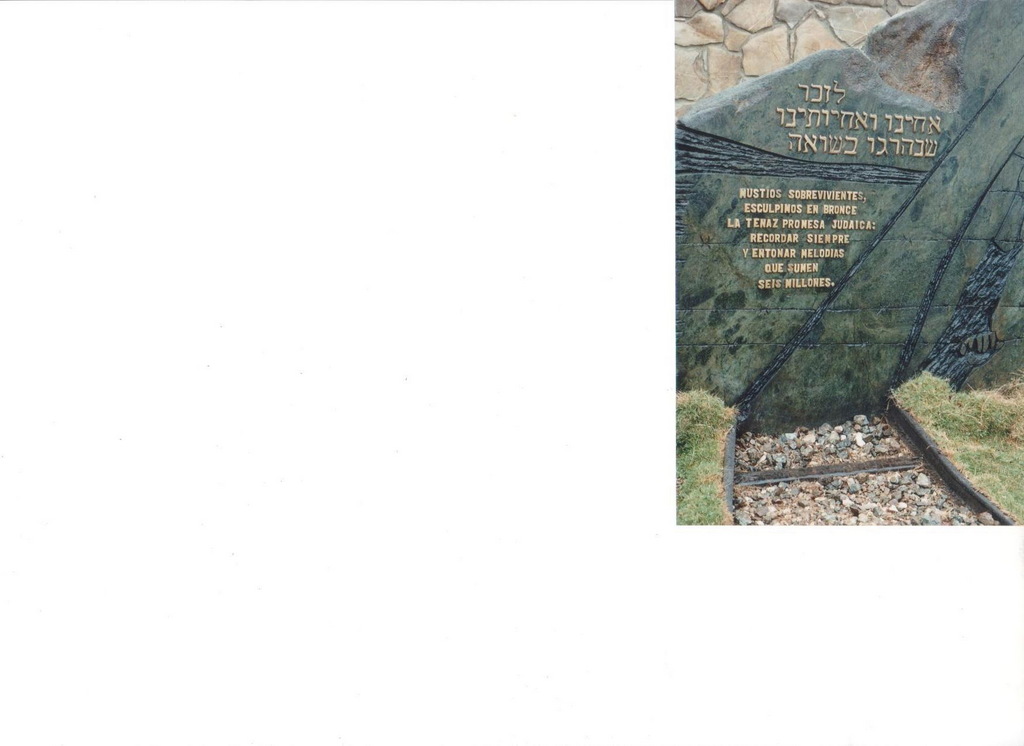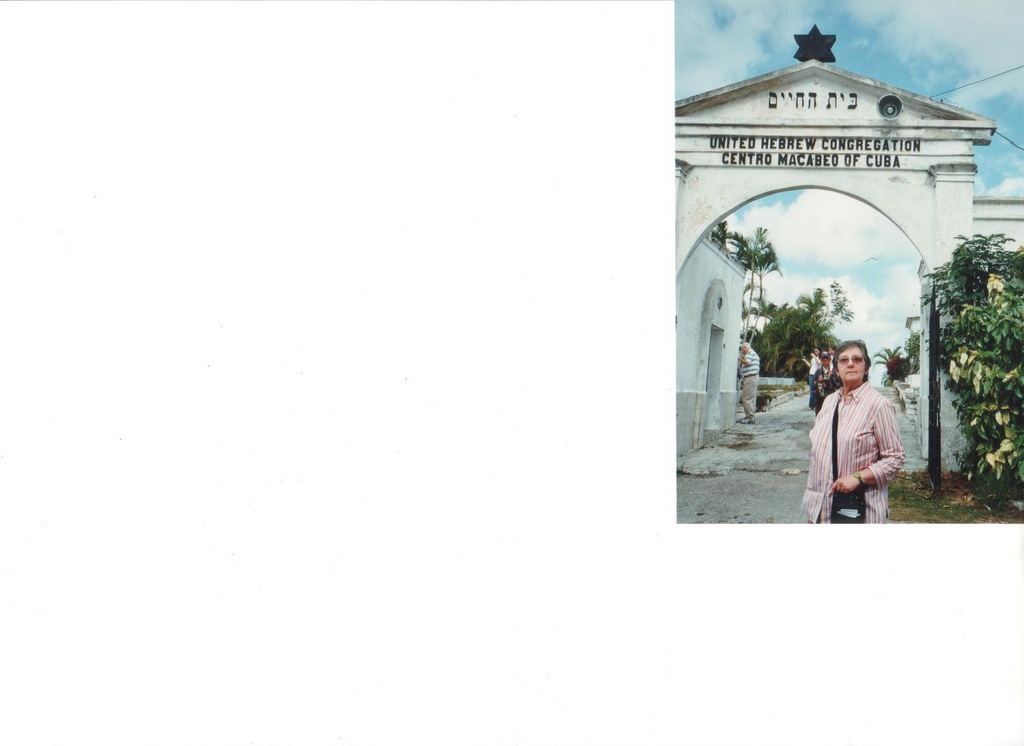Return to Cuba
By Miriam Bradman Abrahams
Issue of Jan. 30, 2009 / 5 Shevat 5769
I finally fulfilled my dream of visiting Cuba and my trip was an overwhelming success, far exceeding anything I had imagined. It is incredible that my mom agreed to come after I pleaded with her for so many years to travel there with me. She generously sponsored my sister and me for this Jewish humanitarian mission to Cuba. My well-traveled dad had always been dead-set against this voyage, and he viewed this trip as risky since we left Cuba as refugees in 1962 and because it is still a dictatorship.
Traveling to Cuba as an American is restricted to precious few. While only very select categories of travelers are issued travel licenses by the U.S. Department of Treasury, tourist visits are forbidden. There are options to travel on a humanitarian or religious mission, or once in three years to visit immediate family. In these cases, a special visa application is required which is complicated and costly.
U.S. citizens may not use credit cards in Cuba, our cell phones don’t work there and we are not permitted to bring back Cuban rum, cigars or coffee. Some bold adventurers travel to Cuba via another country and request their passport not be stamped by Cuban customs, so they won’t be caught upon their return to the U.S. This is a federal offense which could result in fines or a jail term. Having been raised to be strictly law abiding, I could never consider that option.
I have been fortunate to travel to many interesting spots in the world, including South Africa, Mexico, Canada, Puerto Rico, New Zealand, Britain, and of course Israel. But I’ve never returned to the mysterious, forbidden island just 90 miles off the coast of Florida. My cousin Eduardo was still living in Havana in 1999 when he gained access to e-mail. He and I began a flurry of correspondence as he was planning his exit to Israel. We never had contact before.
For the nearly five decades since my parents and I left Cuba, my father had very sparse contact with his brother, Salomon, Eduardo’s father, and then only through a crackly phone line or by a letter delivered personally by a rare traveler. My dad and his brother’s relationship had broken down due to an impossible physical distance and ideological differences. Although now I feel a strong connection to my uncle, growing up I sometimes barely remembered I had family in Havana.
The rediscovery of my long-lost family in Havana and my aunt’s trip to Cuba in 1997 piqued my fervor in pursuing travel there, so I quickly sought a way. I spoke to June Safren in California, executive director of the non-profit Cuba-America Jewish Mission. She connected me to Miriam Saul, Director of Friends of Jewish Cuba in Atlanta who told me there were a couple of spots left on her seven day Chanukah mission. Since applications for visas take much time to process, we had to act quickly.
We started collecting donated basics from friends, local doctors and dentists to bring to the struggling Jewish community in Havana. Each group member was asked to bring at least one suitcase filled with Judaica items, medicines, toiletries, clothes and batteries to help the community which was so recently hit by Hurricane Ike.
There is extreme poverty in Cuba as the populace survives by rations bought in Cuban pesos. They live by the quote “no es vivir pero saber como vivir” — it isn’t simply living (in Cuba) but knowing how to live (survive). We converted U.S. dollars to CUCs — Cuban convertible money — at a 20 percent loss.
There is no fresh paint to be found there but walls everywhere are covered in political slogans, some against the Bush policies. Everyone is happy that Obama is next and hopes for change.
There were 15,000 Jews in Cuba before the revolution; 90 percent fled. Now about 1,500 Jews remain. There were many years of lost Jewish identity due to the incompatibility of communism with religion. When the Pope visited in 1998, religious observance was permitted again. The doors to religious institutions re-opened and the Jewish community began to reestablish itself. Around 1,000 have made Aliyah in recent years but others are rediscovering their roots and children are born, keeping the population steady. Only about 100 are Jews whose parents and grandparents are all Jewish. The rest have intermarried; some spouses have converted through visiting rabbis.
I was so excited to finally see the many places that held meaning for my mom in her 22 years growing up in Cuba and in my father’s 27 years there. Upon landing, everyone clapped; I’ve only ever seen this on flights to Israel.
We delivered donations to the Patronato, the center for Jewish activity in Havana before the revolution, where my parents were married in November 1959. Half of the building is now used as a state theater. The Patronato is led by rotating visiting seminary students from Argentina. The leader’s wife conducts youth groups. Religious services take place Friday night and Saturday morning using the Conservative siddur in Spanish.
Adath Israel is the Orthodox shul in Old Havana, located by what were once the Jewish neighborhoods of Picota and Acosta with streets full of Jewish businesses from diamonds to clothing. Louis Russo leads this community where services are held twice a day using the orthodox siddur and a mechitza and there is a mikvah. Although it is “Cuban style Orthodox,” only those who are known to have complete Jewish lineage are allowed to get an Aliyah and are counted for the minyan. Everyone knows each other, so there is no question concerning background. Jacobo Verezniak is the chazzan and shochet and the knife he uses for shechita was donated from Canada. Kosher food is sent regularly from Canada.
Centro Sefaradi, the Sephardic synagogue, is made up mostly of older congregants since the younger people prefer Patronato. The shul’s Torahs are from congregation Shevet Achim, now in ruins, which was founded in 1914.
All three shuls provide meals to those who attend. There are many social activities to attract people. Children are bussed to Sunday school classes. A pharmacy provides free medications for members who bring prescriptions and the pharmacy is open to the general public once a week to maintain good relations with the surrounding community. Our prescription and non prescription meds filled up the shelves.
In the Jewish cemetery in Havana, my mom was directed to the tombstones of her uncle and two other family friends. She paid the caretakers to maintain them. There is also a Holocaust memorial and a Geniza there.
We drove about five hours east of Havana to a Jewish community in the interior of the island. Santa Clara province has about 35 members with 15 in the town of Santa Clara and a lone family about an hour away in the town of Caibarien. Community leader David Tacher spoke to us in a dilapidated house which will be reconstructed as a shul with money donated by visitors like us. He is only awaiting the permits from the Cuban government.
David dreamt up this project and another to fix up the local Jewish cemetery and add a Holocaust memorial. He had the surrounding walls of the cemetery rebuilt and hired a local artist to create the memorial within, comprised of several stones imported from the ground of the Warsaw Ghetto by the Holocaust Museum in Washington DC. It was very emotional to see this memorial on a rainy day in the middle of the countryside in Cuba.
In Caibarien, we visited Julio Eli and his family. He is a charming saxophone player who plays at nearby hotels. Julio’s home is filled with Judaica. His son has already made Aliyah and his daughter has gone on Canadian Birthright and March of the Living. Though the Israeli government pays all costs of Aliyah, family members are unable to visit due to lack of finances. Julio played Hatikva for us on his saxophone. I promised his wife to e-mail her son photos of our visit. (Cubans are allowed e-mail, but no attachments. Internet is prohibited except for specific jobs where it is highly restricted.)
We asked Julio if he resents the Jews who left at the time of the revolution. He said that events happened quickly and decisions were made fast. He added that the Jews of Cuba couldn’t survive without help from their outside family. We learned that many Jews were involved in the revolution. Some financed Fidel’s boat Granma which is on display at the National museum.
Most importantly, we saw the sites important to my mom and spent quality time with my father’s brother in Havana. We took the ferry to Regla where my mom and aunt lived with my Abuelo Leon and Abuela Rosita and saw my parent’s first apartment in Vedado where I was born. We saw Universidad de la Habana where my father received his law degree and my mother studied philosophy until the university was closed due to the revolution. We visited my uncle’s home and met, for the first time, his daughter and grandchildren who remained in Cuba. I had only met my uncle and aunt once when they were sponsored by my parents for a visit here in 2001. I have treasured a black and white photo of my tio holding me as an infant before we left the island.
I have heard repeatedly the detailed descriptions by my parents of the beautiful beaches and the close-knit community they left behind. I tasted the salty Caribbean waters and visited the decayed buildings of the community. Although I remember nothing of my first 13 months in Havana, I have now revived my connection to Cuba with new memories of these old landmarks.
Miriam Bradman Abrahams is a full time mom and community volunteer, Hadassah Nassau Region One Book Chair, Jewish Book World reviewer and PTA book fair coordinator. She is currently writing her father’s memoir.
Related story: Dreaming of Varadero





















